Creating a compelling background for a portrait is a crucial step in bringing depth and context to your artwork.
It sets the stage for the subject, influencing the overall mood and narrative. This guide provides essential tips and techniques to help you master the art of painting backgrounds.
From color selection to creating depth and texture, we’ll explore the key considerations that make a background harmonize with the portrait.
Whether you’re a seasoned artist or just starting out, these insights will empower you to craft backgrounds that enhance the visual impact and storytelling of your portraits.
Let’s dive into the world of background painting for portraits.
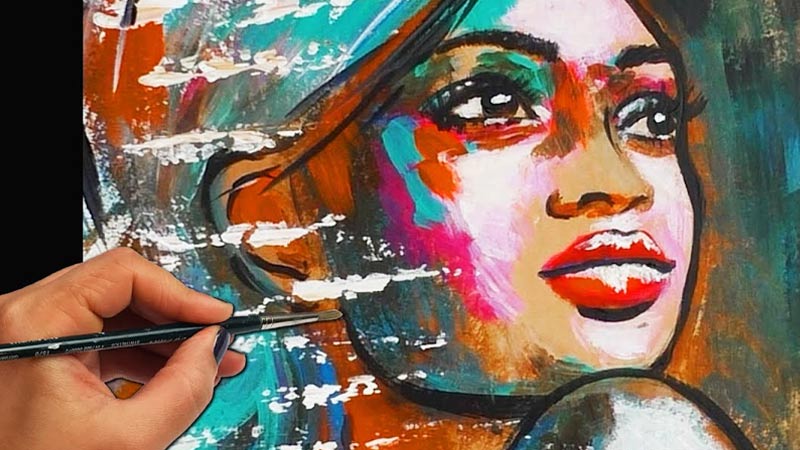
How to Paint a Background for a Portrait?
Painting a background for a portrait can enhance the overall composition and help convey the mood or story of the artwork.
Here’s a step-by-step guide to help you paint a background for a portrait:
Materials You’ll Need:
- Canvas or painting surface
- Acrylic, oil, or watercolor paints (choose according to your preference)
- Paintbrushes of various sizes
- A palette for mixing colors
- Easel (optional, but it can make the process more comfortable)
- Rags or paper towels for cleaning brushes and wiping off excess paint
- Water or a suitable solvent for cleaning brushes (if using oil paints)
- Reference photo or a live model
Steps:
Plan Your Background

Take some time to brainstorm and visualize what you want the background to convey. Consider the emotions, atmosphere, and narrative you want to convey in your portrait.
For example, a serene outdoor setting might convey calmness, while a vibrant urban scene could suggest energy and vitality.
Prepare Your Workspace
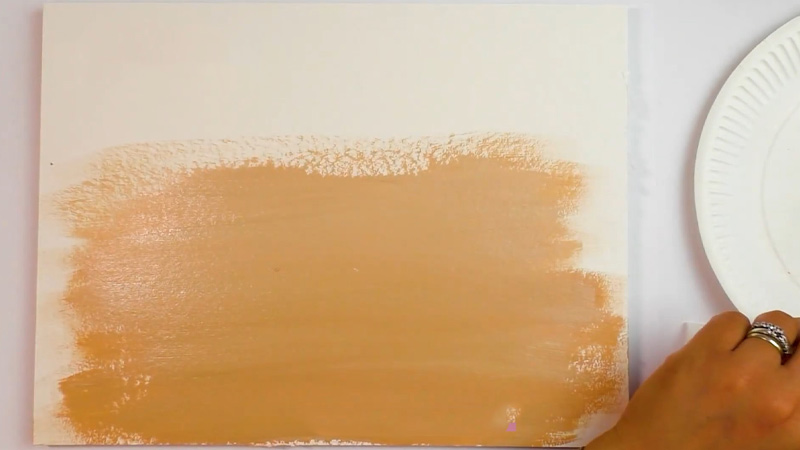
Ensure your workspace is clean and organized. Lay out your materials in a way that’s easy to access. Make sure your lighting is adequate, preferably natural light or a good quality artificial light that won’t distort colors.
SketchYour Portrait
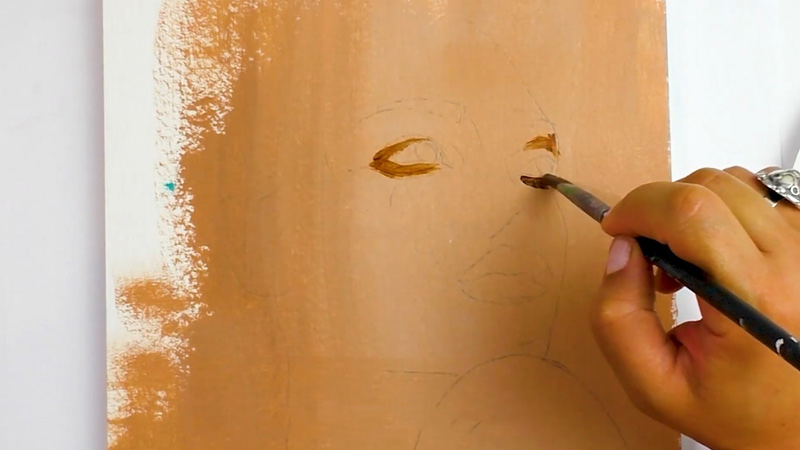
Pay careful attention to proportions, angles, and details. This initial drawing will serve as the foundation for the entire artwork, so take your time to get it right.
If you’re unsure about freehand drawing, consider using a grid or a projector to transfer the image accurately.
Block In the Background
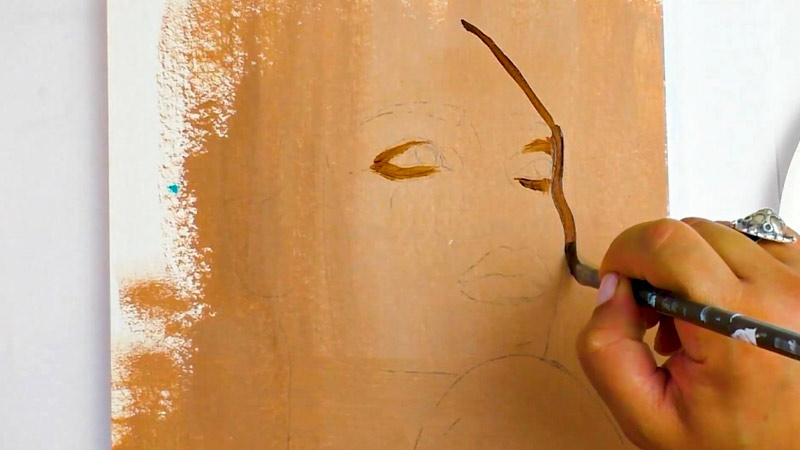
Apply the base color using long, even strokes. If you’re working with acrylics or watercolors, consider using a wash technique to establish the initial color. If using oils, you can thin the paint with a medium to create a transparent base layer.
Build Layers and Texture
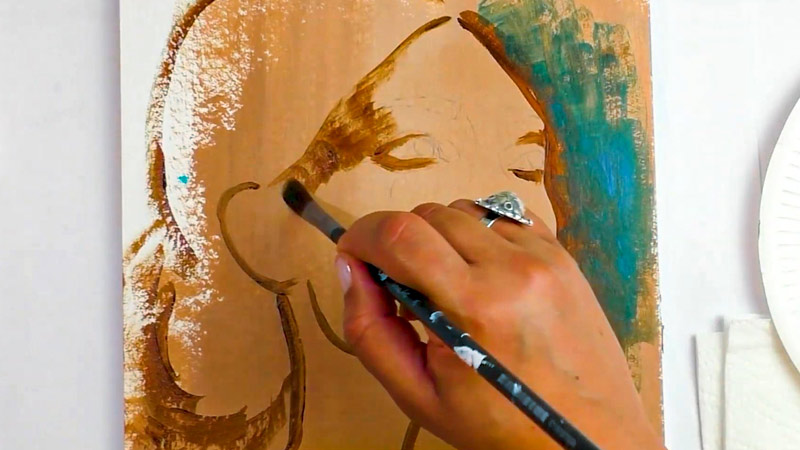
Start building up the background, layer by layer. Consider the elements present in your chosen background – whether it’s a sky, trees, buildings, or abstract patterns.
Use different brushes and techniques to create texture and depth. For example, stippling or dry brushing can add interesting effects.
Blend and Soften Edges
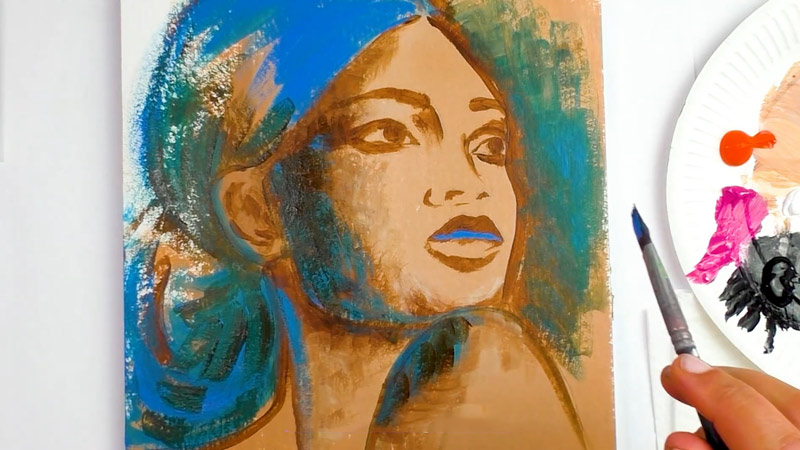
Pay special attention to the edges around the subject’s silhouette. Use a soft brush or a blending tool to gently soften the transition between the subject and the background. This creates a sense of integration and avoids a harsh, disconnected look.
Incorporate Details and Highlights
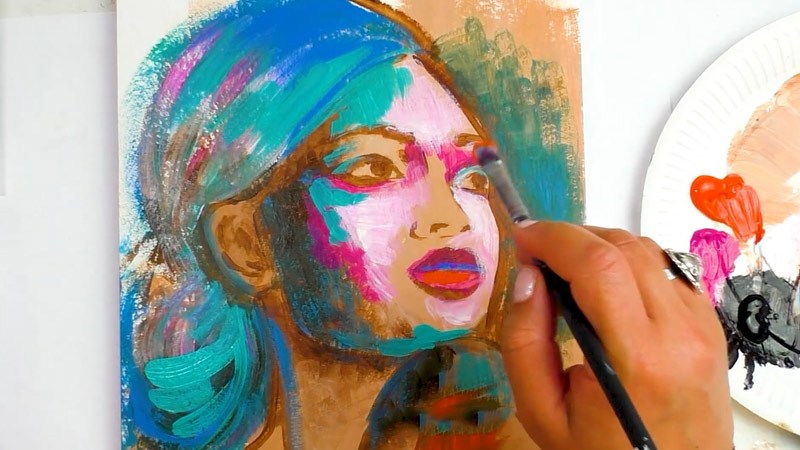
Add any secondary elements or details that enhance the background. For example, if you’re painting a garden scene, include individual flowers, leaves, or other foliage. Use lighter and darker tones to create highlights and shadows, giving dimension to the background.
Review and Adjust
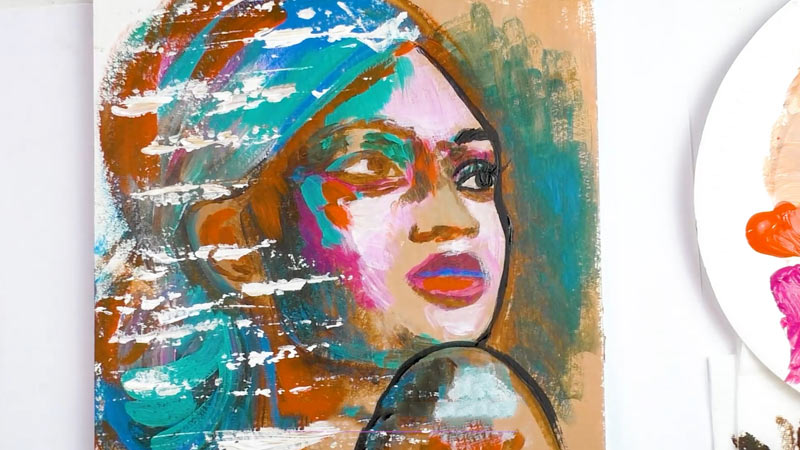
Step back from your painting to gain a fresh perspective. Assess how the background interacts with the portrait. Look for any areas that need refinement or adjustment. Consider the overall balance and harmony of the composition.
Final Touches
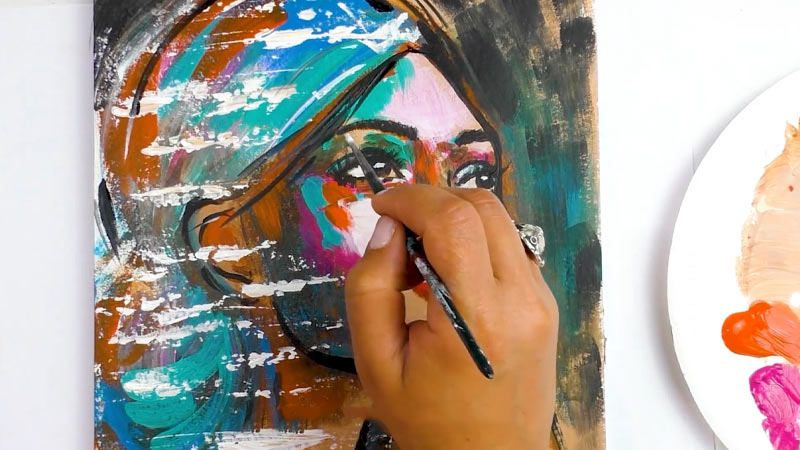
Before you consider your background complete, revisit the portrait itself. Ensure that it remains the focal point of the artwork. Make any necessary adjustments to the subject’s features or details to ensure they align with the intended mood and atmosphere.
Allow to Dry
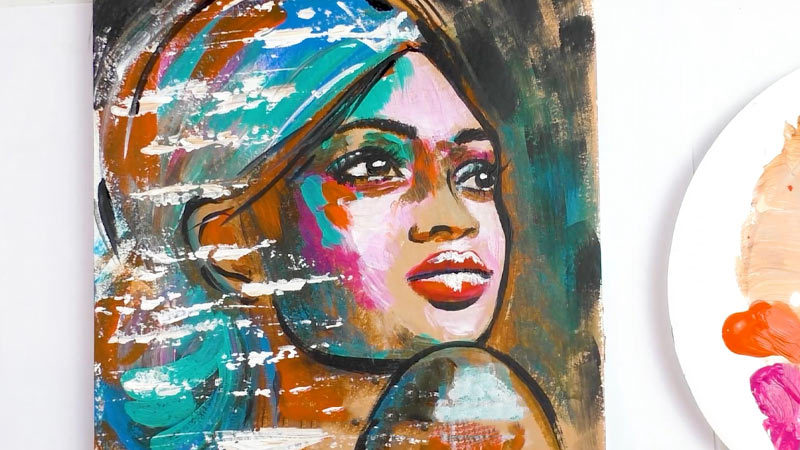
If you’re using acrylic or oil paints, allow the artwork to dry completely before handling or framing. This can take several hours to several days, depending on the thickness of the paint layers.
Some Concepts for Putting in the Background of a Portrait Painting
What you put in the background of a portrait painting can greatly influence the overall composition and story you’re trying to convey.
Here are some elements and considerations for backgrounds in portrait paintings:
Environment
The environment should complement the subject. Consider where the person might naturally be found.
For example, a musician could be placed in a studio filled with instruments, while a chef might be in a bustling kitchen. Think about the subject’s interests, profession, or hobbies.
Mood and Atmosphere
The background sets the mood of the painting. A serene landscape can evoke calmness, while a busy cityscape can convey energy. Pay attention to the emotions you want to evoke and select elements that support that mood.
Colors and Tones
The background’s colors should harmonize with the portrait. You can use analogous or complementary colors to create visual interest.
Consider the color temperature as well; warm colors can create a cozy atmosphere, while cool colors can suggest calmness.
Depth and Perspective
Incorporate elements that add depth to the composition. This could include distant mountains, receding lines in architecture, or overlapping objects. Perspective techniques can draw the viewer’s eye into the painting.
Storytelling
The background can tell a story or provide context to the portrait subject. For instance, if you’re painting a historical figure, include relevant symbols, landmarks, or historical references in the background to enhance the narrative.
Texture and Detail
Add texture and detail to the background to create visual interest. This might involve intricate patterns, foliage, architectural details, or atmospheric effects. The level of detail should complement the level of detail in the portrait itself.
Negative Space
Consider the use of negative space around the subject. Negative space can draw attention to the subject’s face and create a sense of balance. It can also be used to emphasize the subject’s presence in the environment.
Abstract Backgrounds
Sometimes, a purely abstract background can work well, especially for modern or conceptual portraits. Abstract backgrounds allow for creative expression and can highlight the subject’s emotional state or personality.
Simplification
In some cases, a simple or minimal background can be highly effective. A plain backdrop or a gradient can make the subject stand out more prominently, especially if you want the focus to be solely on the person’s expression.
Personalization
Tailor the background to the individual. Incorporate elements that are meaningful to the subject, such as personal belongings, favorite locations, or symbolic objects that represent their life journey.
Considerations of Color Selection in the Background of a Portrait Painting
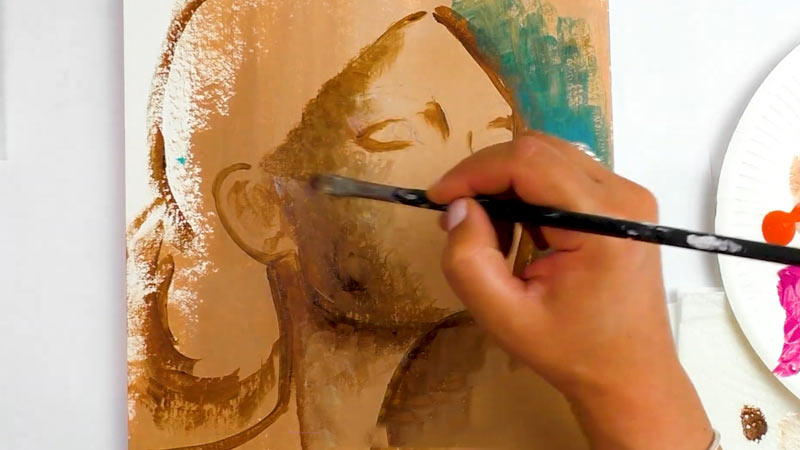
Color selection in the background of a portrait painting is a critical artistic decision that can greatly impact the overall mood, atmosphere, and visual appeal of the artwork.
Here are some considerations for choosing colors in the background:
Harmony and Contrast
Consider the color relationship between the background and the subject. Harmonious colors create a soothing and balanced feel while contrasting colors can make the subject stand out and add dynamic energy.
Emotional Impact
Different colors evoke different emotions. Warm colors like reds, oranges, and yellows can convey energy, passion, and warmth. Cool colors like blues and greens evoke calmness, tranquility, and introspection.
Complementary Colors
Using complementary colors (those opposite each other on the color wheel) in the background can create visual interest and vibrancy. For example, a blue background can make a warm-toned subject pop.
Analogous Colors
Analogous colors (those next to each other on the color wheel) create a sense of harmony and cohesion. This can be particularly effective in creating a unified, balanced composition.
Temperature
Consider the temperature of the colors. Warm colors like reds, yellows, and oranges advance visually, while cool colors like blues and greens recede. This can affect how the background interacts with the subject.
Light and Shadow
Think about how light and shadow play in the background. Highlight areas might have lighter, more intense colors, while shadowed areas might have darker, muted tones. This adds depth and dimension to the background.
Cultural Significance
Depending on the subject, consider cultural associations with colors. For example, in some cultures, red might symbolize luck or celebration, while in others, it might symbolize danger.
Atmospheric Perspective
Use color to create a sense of depth and distance in the background. As objects recede, they tend to take on cooler, lighter tones. This technique can create a sense of three-dimensionality.
Limited Color Palette
Using a limited color palette can create a cohesive and harmonious composition. This can be particularly effective if you want to create a specific mood or atmosphere.
Personal Style and Expression
Don’t be afraid to inject your personal style and artistic expression into your color choices. Experiment with unconventional color schemes to create a unique and memorable background.
Tips for Painting the Background for a Portrait
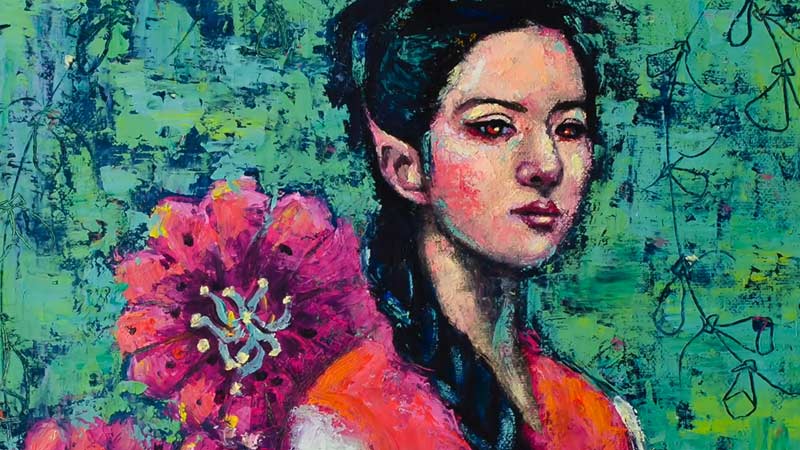
Painting the background for a portrait requires careful consideration and skill to ensure that it enhances the overall composition and complements the subject.
Here are some tips to help you paint a compelling background for your portrait:
Plan Ahead
Before you start, have a clear idea of the mood, atmosphere, and story you want to convey in your portrait. Think about the colors and elements that will support your vision.
Separate Subject and Background
While painting the background, it’s essential to keep the subject in mind but focus on the background separately. This ensures that you don’t inadvertently alter the subject while working on the background.
Choose the Right Colors
Select background colors that harmonize with the subject’s colors or convey the desired mood. Consider the color wheel, color temperature (warm or cool), and color psychology when making your choices.
Paint the Background First
Many artists find it helpful to paint the background before working on the subject. This allows you to establish the environment and create a visual context for the portrait.
Create Depth and Perspective
Incorporate elements that give the background depth, such as distant objects, receding lines, or aerial perspective (lighter, cooler colors in the distance). This helps make the portrait pop and adds realism.
Use Layering and Texture
Build up layers of color and texture in the background to make it visually interesting. Experiment with different brushstrokes and techniques to create depth and variety.
Blend Edges Smoothly
Ensure that the edges between the subject and background are seamless and well-blended. Use soft brushes or blending tools to soften these transitions, maintaining a natural look.
Keep the Background Subtle
The background should complement the subject, not overpower it. Avoid excessive detail or vibrant colors that can distract from the portrait. A subtle and balanced background often works best.
Consider Negative Space
Think about the negative space around the subject. It can be used to frame the subject and draw attention to it. Adjust the amount of negative space to achieve the desired composition.
Practice and Experiment
Background painting is a skill that improves with practice. Don’t be discouraged by initial challenges. Experiment with various techniques and styles to find what works best for you.
FAQS
What role does the background play in a portrait painting?
The background sets the scene and atmosphere for the portrait. It complements the subject, adds depth, and helps convey the mood or narrative of the artwork.
Should I paint the background before or after the subject in a portrait?
It’s generally recommended to paint the background before the subject. This allows you to establish the environment and create a visual context for the portrait.
How do I choose the right colors for the background?
Consider the mood and atmosphere you want to convey. Harmonize the background colors with the subject’s palette. Use the color wheel, temperature, and psychology to guide your choices.
How can I create depth in the background of a portrait painting?
Incorporate elements like distant objects, receding lines, and atmospheric perspective (lighter, cooler colors in the distance) to give the background depth and realism.
What techniques can I use to blend the edges between the subject and the background?
Soft brushes, blending tools, and careful brushwork are essential for blending edges smoothly. Pay attention to transitions to maintain a natural and seamless look.
To Wrap Up
Painting a background for a portrait is an art form that requires thoughtful consideration and skill. It serves as the canvas’s foundation, enhancing the subject’s presence and storytelling.
By carefully selecting colors, creating depth, and paying attention to detail, you can craft a background that harmonizes with the portrait, evoking the desired mood and atmosphere.
Remember, practice and experimentation are key to mastering this skill. Embrace your creativity, trust your instincts, and don’t be afraid to take risks.
With dedication and these techniques in hand, you’ll be well-equipped to paint captivating backgrounds that elevate the impact of your portraits.
Leave a Reply